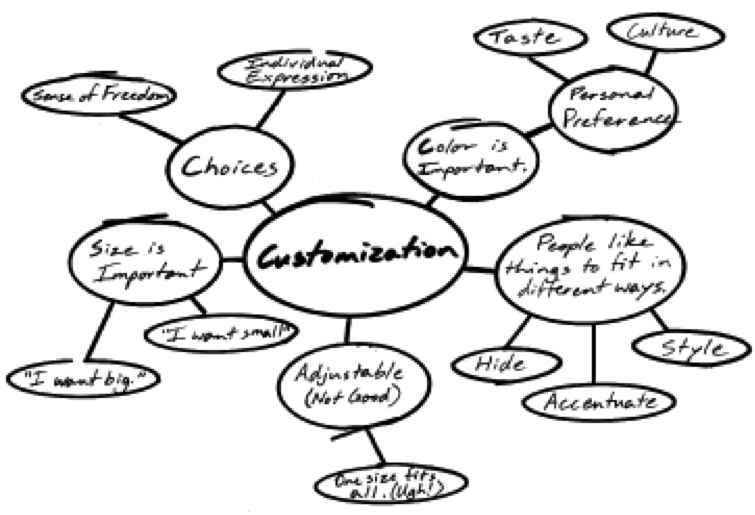Brainstorming can be a fun exercise. But sometimes the open-ended, freeform nature of most brainstorming sessions can be frustrating if there isn’t some kind of structure or process to help guide or direct the thinking.
A process called mind mapping can be a valuable tool. Often used by designers to facilitate idea generation and categorization, it can be useful for anyone or any group looking to create fresh ideas. A mind map is a diagram of words and thoughts that are linked to, and arranged around, a central key idea. By presenting ideas in a radial, non-linear manner, mind maps encourage a brainstorming approach that allows exploration without losing sight of the most important element that needs to be expressed. They can also be an aid in problem-solving and decision-making during early stages of the design process.
The elements of a mind map are arranged into groupings and branches that represent semantic and perceptual connections. Major concepts or ideas are referred to as “parent” thoughts; a directly related thought is a “child” thought, and related child thoughts are “sibling” thoughts. There are also “jump” thoughts, which are unrelated new thoughts that are still relevant to the overall brainstorming theme.
A mind map can also be helpful when created in reverse, where thought clusters can lead to discovering a new concept. Here is an example:

A mind map exploring ways to position a clothing line
The appeal of mind mapping is its purposeful avoidance of a primary linear process, which often restricts ideation. Though the branches of a mind map form hierarchical tree structures, their freeform structure disrupts the implicit prioritization of concepts that comes from sequential arrangements. This encourages users to develop and connect concepts without feeling that they need to begin ideation within a particular conceptual framework.
The next time you’re invited to a brainstorming session, take this tool along. It could help provide the structure needed to arrive at a great idea or concept sooner than you’d expect.